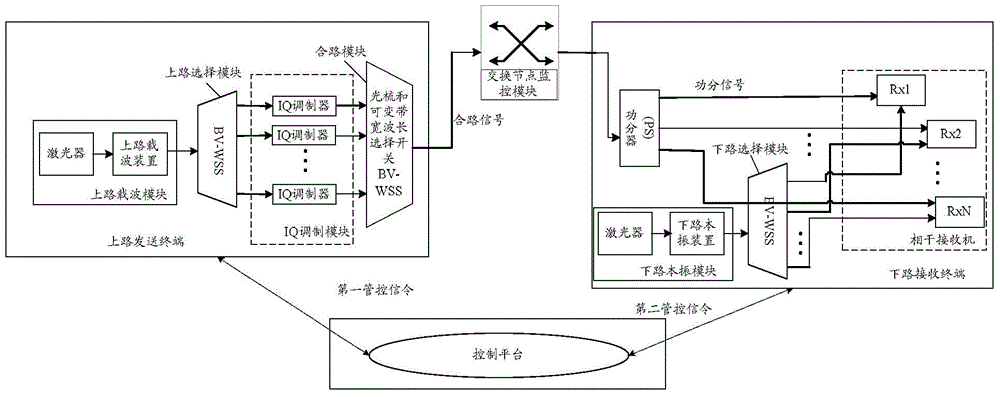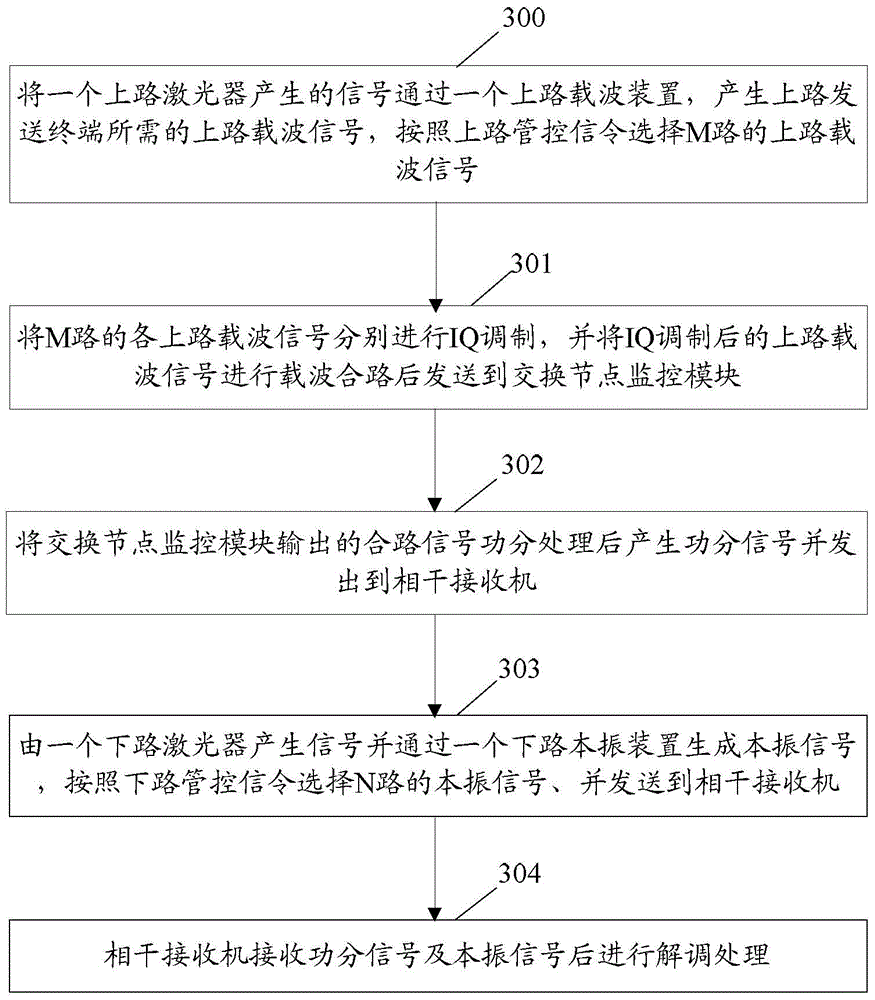ROADM add-drop transceiving system, method and terminal based on optical frequency comb
A technology of sending terminal and receiving terminal, applied in optical multiplexing systems, transmission systems, electromagnetic transceivers, etc., can solve the problems of complex management and control, reducing system reliability, affecting large-scale applications, etc.
- Summary
- Abstract
- Description
- Claims
- Application Information
AI Technical Summary
Problems solved by technology
Method used
Image
Examples
Embodiment Construction
[0077] Optical comb, also known as optical frequency comb, refers to an optical device based on mode-locked pulsed laser technology or cyclic frequency shifting technology. When a narrow pulse seed laser is input, it can output a group of up to hundreds of wavelengths with discrete frequencies, precisely equal wavelength intervals in the time domain, and consistent phase and noise characteristics. The spectrum of this set of light is distributed much like the teeth of a comb, spaced at exactly the same interval as the repetition rate of the laser. The frequency of the output light can be adjusted by controlling the input seed light. The combination of a laser and an optical comb can generate hundreds of carriers for optical communication, replacing the same number of individual lasers, saving resources and energy consumption.
[0078] WSS, a bandwidth-variable wavelength-selective switch (BV-WSS for short) based on liquid crystal on silicon (LCoS) technology is widely used as...
PUM
 Login to View More
Login to View More Abstract
Description
Claims
Application Information
 Login to View More
Login to View More - R&D
- Intellectual Property
- Life Sciences
- Materials
- Tech Scout
- Unparalleled Data Quality
- Higher Quality Content
- 60% Fewer Hallucinations
Browse by: Latest US Patents, China's latest patents, Technical Efficacy Thesaurus, Application Domain, Technology Topic, Popular Technical Reports.
© 2025 PatSnap. All rights reserved.Legal|Privacy policy|Modern Slavery Act Transparency Statement|Sitemap|About US| Contact US: help@patsnap.com



